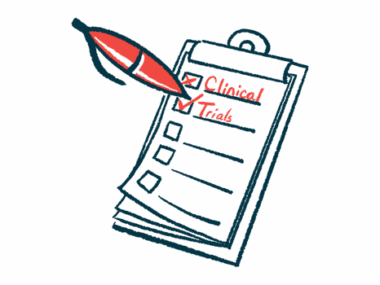Educating others about Angelman syndrome on my own terms
Parenting a child with chronic illness often involves lots of questions from others
Written by |

My 13-year-old daughter, Juliana, has a rare, neurogenetic disease. That is a loaded statement, because most people don’t know what it means.
I can’t blame them, of course, but that doesn’t mean I have to like it. It can be frustrating to describe Angelman syndrome (AS) to strangers, so I usually don’t. Ten years ago when I began writing about AS, I decided to educate others about the rare disease on my own terms.
Angelman syndrome is so rare that follow-up questions often follow when I mention it. I provide the simple explanation that Angelman affects about 1 out of 15,000 people, and it changes how Juliana’s body receives information. I add that Juliana is nonverbal but can communicate in other ways. I typically stop discussing it after that.
Family and friends who support us as we live with AS understand the obstacles and challenges we face. It can be difficult to explain this to strangers. I don’t lament our lifestyle or talk about Juliana’s bad days.
Instead, I talk about columns I’ve written that show the positive aspects of living with a rare disease. If I have a connection with someone, I’ll pull up my personal blog or my column here at Angelman Syndrome News. My goal is to help them understand the good things happening in Juliana’s life.
Oh, so rare
I know that when people see Juliana, they see differences and challenges. But that’s not what I want them to see. I want them to see how her smile lights up the room. When our family is together, I hope they experience how much we love and support one another. If Juliana is interacting with her sister, Jessa, they can witness the genuine affection and playfulness they have with each other.
Most people we encounter are genuinely nice and will acknowledge Juliana with a hearty hello. But I am bothered when other children give Juliana odd stares. There is something in them that knows that she is different, and they aren’t certain what to do about it.
When this happens, I smile and do a quick introduction if I can. I tell myself that as I help more adults understand what’s beautiful about my daughter, this information will be passed along to their children. And sometimes, as happened last summer at the pool, kindness emerges from the exchange.
Living with a rare disease is a life like no other. Maybe I’m not doing enough to tell the world how difficult it is. Of course, that proclamation wouldn’t change anything. So I’ve taken a different approach to how I present our rare lifestyle.
Every day is not sunshine, but neither is the average life. I don’t want people to feel sorry for Juliana or me. However brief the encounter, I want them to see that we are having a pretty good life as we make the best of being rare.
Note: Angelman Syndrome News is strictly a news and information website about the disease. It does not provide medical advice, diagnosis, or treatment. This content is not intended to be a substitute for professional medical advice, diagnosis, or treatment. Always seek the advice of your physician or other qualified health provider with any questions you may have regarding a medical condition. Never disregard professional medical advice or delay in seeking it because of something you have read on this website. The opinions expressed in this column are not those of Angelman Syndrome News or its parent company, Bionews, and are intended to spark discussion about issues pertaining to Angelman syndrome.







Leave a comment
Fill in the required fields to post. Your email address will not be published.